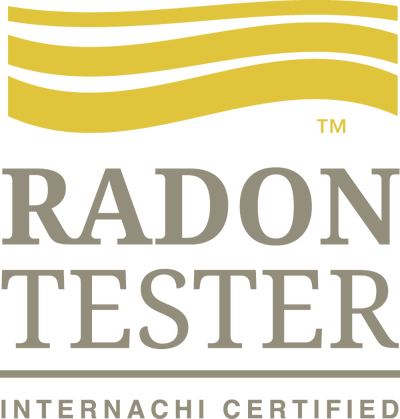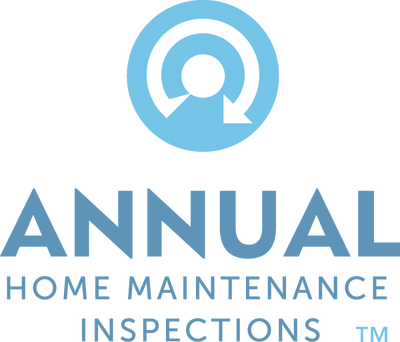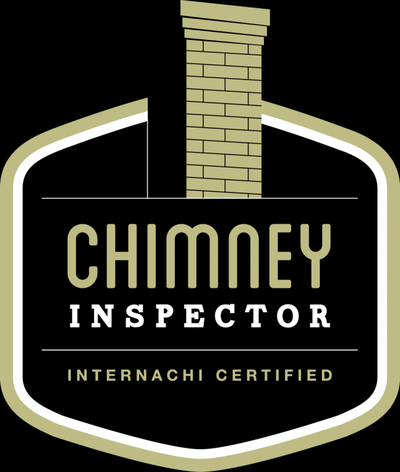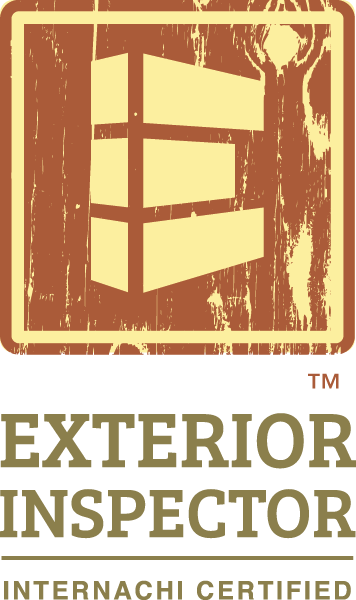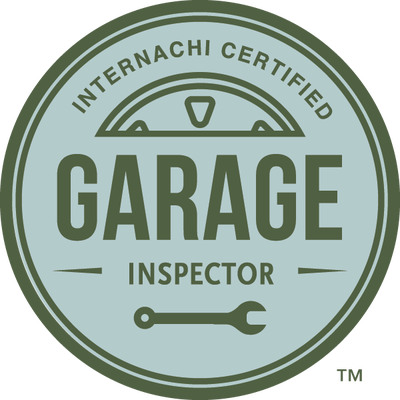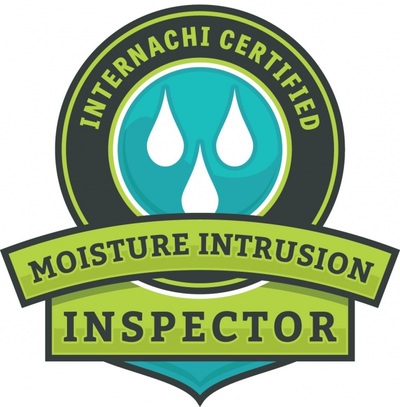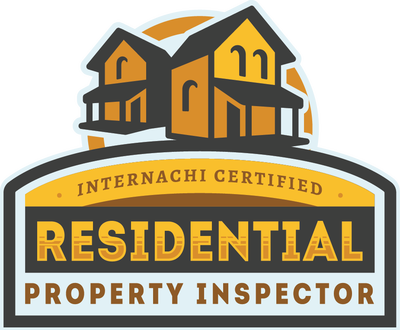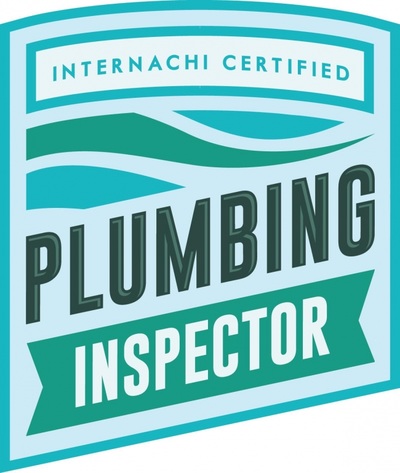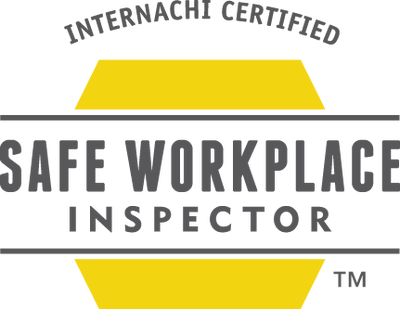|
by Nick Gromicko and Ben Gromicko 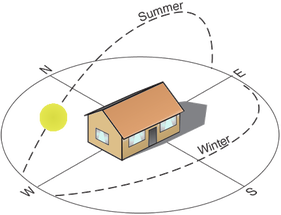 Building orientation is the practice of facing a building so as to maximize certain aspects of its surroundings, such as street appeal, to capture a scenic view, for drainage considerations, etc. With rising energy costs, it’s becoming increasingly important for builders to orient buildings to capitalize on the Sun’s free energy. For developers and builders, orienting a new home to take advantage of the warmth of the Sun will increase the home's appeal and marketability. For homeowners, it will increase their indoor comfort and reduce their energy bills. Thus, building orientation, along with daylighting and thermal mass, are crucial considerations of passive solar construction that can be incorporated into virtually any new home design. InterNACHI inspectors who consult with new homeowners can pass along this valuable information to help their clients reap long-term energy benefits and savings. Facts and Figures
Schoolchildren (and most homeowners) will tell you that the Sun rises in the east and sets in the west, and, if this were true, building orientation would be a fairly simple matter. In reality, the sun rises and sets in the east and west only on the autumnal and vernal equinoxes, and something very different happens during the remaining 363 days of the year. The Earth’s tilt causes the Sun to rise and set slightly south of east and west in the winter, and slightly north of east and west in the summer. This slight angle depends on the time of year and the observer’s distance from the equator. As a result, the winter sun spends all of its time in the southern sky, and the summer sun spends much of its time in the northern sky (the sun crosses over into the southern sky during part of the day, depending on latitude). In the Southern Hemisphere, all of these directions are reversed, so the winter sun rises and sets in the northeast and northwest, respectively, and the summer sun rises and sets in the southeast and southwest, respectively. How the Sun’s Variations in Position Can Affect Building Design The relative position of the Sun is a major factor in heat gain in buildings, which makes accurate orientation of the building a fundamental consideration in passive solar construction. Most importantly, a rectangular house’s ridgeline should run east-west to maximize the length of the southern side, which should also incorporate several windows in its design. For this reason, fewer windows should be located on the northern side of the house, where the summer sun can be intense. A deep roof overhang can shade the few windows in this area, as can different types of shade trees and bushes. Research supports an east-west ridgeline. Homes re-oriented toward the Sun without any additional solar features save between 10% and 20% and some can save up to 40% on home heating, according to the Bonneville Power Administration and the City of San Jose, California. Builders should note that these directions are given in reference to the Sun and not magnetic north, which can vary significantly from the Sun’s actual position. Magnetic north, as read from a compass, can still be used as a reference if the builder adjusts the figure based on the location-specific magnetic variation, which can be found in publicly available maps. Building Tips for New Construction The following tips will also assist homeowners and builders in maximizing heat gain through building orientation:
In summary, homes oriented to the path of the Sun with require less energy for heating and cooling, resulting in lower energy bills and increased indoor comfort. Homeowners who are considering new builds should consult an InterNACHI inspector who can meet with them and their builder to discuss ways to maximize low-cost and no-cost energy strategies. Craftsman Home Inspections llc is a home inspection and Radon Testing company proudly serving the Aurora CO and Denver CO Metro Areas. If you are looking for a Home Inspector in Aurora or Denver, please give us a call at 720-593-0383 or check us out online at CraftsmanColorado.com or simply schedule your home inspection below.
SCHEDULE INSPECTION
0 Comments
by Nick Gromicko and Ben Gromicko 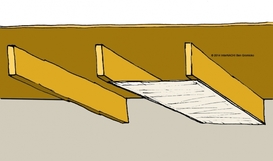 Nearly all building codes restrict the use of cavity spaces as supply ducts. However, it has been common practice to use cavity spaces as return-air pathways. Building cavities used as return-air plenums is one of the leading causes of duct leakage in homes today. Inspectors can learn how air leakage from ductwork may cause home energy loss, increase utility bills, lower comfort levels, and make the HVAC system less efficient. Still commonly used is the panned floor joist. Using floor joists as return ducts by panning can cause leakage because negative pressure in the cavity will draw air from the outside into the cavity through the construction joints of the rim area at the end of the joist cavity. The illustration above shows a floor joist cavity used as a return-air duct by nailing material, such as gypsum board, sheet metal, foil insulation or OSB, to the bottom of the floor joists. There are manufacturers that advertise “insulating” panning sheet products that aid in this practice; however, using panned floor joists as an HVAC air pathway is highly discouraged because air leakage will be very difficult, if not impossible, to prevent. Some builders create pan joists by attaching a solid panning sheet material to the bottom of a floor joist to create a return-air pathway. Using panned joists is not the best practice because the return-air pathways cannot be air-sealed properly. Wall Cavities Cavities (or interstitial spaces) within walls are also sometimes used as supply- or return-air pathways. These cavities often create a connection of inside air with outside air from an attic or crawlspace. It is very difficult to make such cavity spaces airtight. When cavity spaces are used as return-air pathways or supply-air ducts, a few issues will arise. Because cavity spaces are leaky, building pressure imbalances across the building envelope will occur, driving air infiltration into the building. A cavity space used as a return-air pathway will pull pollutants into the building from unknown sources. Another issue with using cavity spaces as return-air pathways is fire safety. Building materials, such as wood products, do not meet the flame- and smoke-spread criteria as do approved duct materials. Using cavities as return or supply ducts is not a fire hazard in itself, but it will encourage a fire to spread throughout the building. In humid climates, a cavity space used as a return-air pathway will pull humid air into the cavity space, possibly encouraging mold growth or the deterioration of building materials. Other common framing cavities used as return-air pathways or plenums are air-handler platforms, open-floor truss cavities, and dropped ceilings. Open-floor trusses used as return-air plenums can draw air from any place connected to that floor. Air-handler platforms used as return-air plenums can draw air from vented attics and crawlspaces through other connected framing cavities. While none of these spaces makes an acceptable air pathway on its own, some building cavities, such as floor joists, can make acceptable duct chases to contain an insulated, air-sealed, metal, or flex supply or return duct. How to Use Building Cavities as Duct Chases for Supply and Return Pathways
Duct Distribution Quality Installation Building cavities used as supply or return ducts should be avoided because of the difficulty of properly air sealing and insulating them. If building cavities are used, insulation should be installed without misalignments, compressions, gaps, or voids in all cavities used for ducts. If non-rigid insulation is used, a rigid air barrier or other supporting material should be installed to hold insulation in place. All seams, gaps and holes of the air barrier should be sealed with caulk or foam. According to the U.S. Department of Energy's ENERGY STAR program, if building cavities are used as supply and return ducts, then:
ENERGY STAR requires that all ducts in exterior walls must be within the air barrier as well as the thermal boundary. It is important for the framer and HVAC contractor to coordinate on the location of a return duct. This allows for proper spacing of the floor or roof structure for installation of the return. If installing supply ducts within the walls, verify that the duct is capable of outputting the necessary air flow. Typically, only double-wall assemblies will have enough depth to allow for proper insulation and duct size. If installing return ducts using the floor or ceiling structure, ENERGY STAR recommends sealing both the exterior and the interior of all return boxes to prevent air leakage. 2009 IECC Section 403.2.3 Building cavities (Mandatory). Building framing cavities cannot be used as supply ducts. Section 403.2.1 Insulation (Prescriptive). Supply ducts in attics are insulated to a minimum of R-8. All other ducts in unconditioned spaces or outside the building envelope are insulated to at least R-6. 2009 IRC Section M1601.1.1 Above-ground duct systems. Stud wall cavities and spaces between solid floor joists cannot be used as supply-air plenums. 2012 IECC Section R403.2.3 Building cavities (Mandatory). Building framing cavities cannot be used as supply ducts or plenums. Section R403.2.1 Insulation (Prescriptive). Supply ducts in attics are insulated to a minimum of R-8. All other ducts in unconditioned spaces or outside the building envelope are insulated to at least R-6. 2012 IRC Section M1601.1.1 Above-ground duct systems. Stud-wall cavities and spaces between solid floor joists cannot be used as supply-air plenums. Stud-wall cavities in building envelope exterior walls cannot be used as air plenums. Here's a joist cavity being used as a supply duct. Here's a joist cavity with a disconnected duct. It has dropped down from the floor. Here's the interior of an insulated duct. Here's the interior of a joist cavity being used as a supply duct. Here's a joist cavity being used as the main return duct. This is also the location of the air filter. This is a panned floor joist cavity being used as supply duct. Drainpipes should not pass through ductwork. This ceiling register was part of a return duct that used the floor joist cavity above. This is a panned floor joist cavity being used as a return duct. Here are two joist cavities above the central I-beam being used as part of a main supply duct to the second floor. Here's a floor joist cavity being used as a return duct. Here's a floor joist cavity being used as a return duct. The rest of the duct was never installed and connected to the HVAC system. Here's a floor joist cavity being used as a supply duct. Summary Minimizing air leakage from ductwork can help reduce home energy loss, lower utility bills, increase comfort levels, and make the HVAC system operate more efficiently. Recognized and acceptable duct materials should be used for all HVAC airways. Acceptable duct materials include galvanized steel, aluminum, fiberglass duct board, and flexible duct. The duct layout should be considered in the initial framing design stage. Building cavity space alone should not be used as a supply- or return-air pathway. For the cavity to serve as a supply- or return-air pathway, it must contain a sealed, insulated duct made of approved duct materials. A duct-blaster test can be used to detect duct leakage and to confirm proper air flow at each duct supply outlet. Craftsman Home Inspections llc is a home inspection and Radon Testing company proudly serving the Aurora CO and Denver CO Metro Areas. If you are looking for a Home Inspector in Aurora or Denver, please give us a call at 720-593-0383 or check us out online at CraftsmanColorado.com or simply schedule your home inspection below.
SCHEDULE INSPECTION  If you want to build a new home, there are things you need to know before you begin. Learn about construction standards and about buying land, so you know your rights. MPS Supplementing Model Building Codes The Minimum Property Standards (MPS) establish certain minimum standards for buildings constructed under HUD housing programs. This includes new single-family homes, multi-family housing and healthcare-type facilities. HUD Minimum Property Standards and How They Supplement the Model Building Codes Until the mid-1980s, HUD maintained separate Minimum Property Standards for different types of structures. Since that time, HUD has accepted the model building codes, including over 250 referenced standards and local building codes, in lieu of separate and prescriptive HUD standards. However, there is one major area of difference between the MPS and other model building codes -- durability requirements. Homes and projects financed by FHA-insured mortgages are the collateral for these loans, and their lack of durability can increase the FHA's financial risk in the event of default. More specifically, the model codes do not contain any minimum requirements for the durability of items such as doors, windows, gutters and downspouts, painting and wall coverings, kitchen cabinets and carpeting. The MPS includes minimum standards for these, and other items, to ensure that the value of an FHA-insured home is not reduced by the deterioration of these components. HUD Field Office Acceptance for Areas Without Building Codes HUD requires that each property insured with an FHA mortgage meet one of the nationally recognized building codes or a state or local building code based on a nationally recognized building code. In areas where such state or local codes are used, HUD determines if the state or local code is comparable to the model building code. There are also areas of the United States that do not have building codes. If no state or local building code has been adopted, the appropriate HUD Field Office will specify a building code that is comparable to one of the nationally recognized model building codes. Interstate Land Sales The Interstate Land Sales program protects consumers from fraud and abuse in the sale or lease of land. In 1968, Congress enacted the Interstate Land Sales Full Disclosure Act, which is patterned after the Securities Law of 1933, and requires land developers to register subdivisions of 100 or more non-exempt lots with HUD, and to provide each purchaser with a disclosure document called a property report. The property report contains relevant information about the subdivision and must be delivered to each purchaser before the signing of the contract or agreement. Buying Lots from Developers Be well informed when shopping for land. Lots may be marketed as sites for future retirement homes, for second home locations, or for recreational or campsite use. However, be wary of any investment aspect that may be stressed by sales personnel. If you plan to purchase a lot which is offered by promotional land sales, take plenty of time before coming to a decision. Before signing a purchase agreement, a contract, or a check:
This report is prepared and issued by the developer of this subdivision. It is not prepared or issued by the federal government. Federal law requires that you receive this report prior to signing a contract or agreement to buy or lease a lot in this subdivision. However, no federal agency has judged the merits or value of the property. If you received the report prior to signing a contract or agreement, you may cancel your contract or agreement by giving notice to the seller any time before midnight of the seventh day following the signing of the contract or agreement. If you did not receive this report before you signed a contract or agreement, you may cancel the contract or agreement any time within two years from the date of signing. Your Contract Rights If the lot you are buying is subject to the jurisdiction of the Interstate Land Sales Full Disclosure Act, the contract or purchase agreement must inform you of certain rights given to buyers by that Act. The contract should state that the buyer has a "cooling-off" period of seven days (or longer, if provided by state law) following the day that the contract is signed to cancel the contract, for any reason, by notice to the seller, and get his or her money back. Furthermore, unless the contract states that the seller will give the buyer a warranty deed, within 180 days after the contract is signed, the buyer has a right to cancel the contract for up to two years from the day that the contract is signed, unless the contract contains the following provisions:
It has always been the law that if the developer has an obligation to register with the Interstate Land Sales Division, the developer or sales agent must give the buyer a copy of the current property report before the buyer signs a contract. Otherwise, the buyer has up to two years to cancel the contract and get their money back. That fact must also be clearly set forth in all contracts. You may have the right to void the contract if the subdivision has not been registered with HUD, or you were not given a property report. Furthermore, if the developer has represented that it will provide or complete roads, water, sewer, gas, electricity or recreational facilities in its property report, in its advertising, or in its sales promotions, the developer must obligate itself to do so in the contract, clearly and conditionally (except for acts of nature or impossibility of performance). In addition to the right to a full disclosure of information about the lot, the prospective buyer may have the right to void the contract and receive a refund of their money if the developer has failed to register the subdivision with HUD or has failed to supply the purchaser with a property report. While a purchaser may have the right to void the contract with the developer under these conditions, the purchaser may still be liable for contract payments to a third party if that contract has been assigned to a financing institution or some similar entity. The registration is retained by HUD and is available for public inspection. If the property report contains misstatements of fact, if there are omissions, if fraudulent sales practices are used, or if other provisions of the law have been violated, the purchaser may also sue to recover damages and actual costs and expenses in court against the developer. However, depending on when your sale occurred, you may be barred from taking further action due to the Act's statute of limitations. Your attorney can advise you further on this matter. "Cooling-Off" Period Even if you received the property report prior to the time of your signing of the contract or agreement, you have the right to revoke the contract or agreement by notice to the seller until midnight of the seventh day following the signing of the contract. You should contact the developer, preferably in writing, if you wish to revoke your contract and receive a refund of any money paid to date. Even if the property report is delivered to you before you sign a sales agreement, the law gives you a "cooling-off " period. This right cannot be waived. A Word About the Interstate Land Sales Division The HUD unit which administers the law, examines the developer's registration statement, and registers the land sales operator is the Interstate Land Sales Division. Except for disclosure purposes, this office is not concerned with zoning or land-use planning, and has no control over the quality of the subdivision. It does not dictate what land can be sold, to whom, or at what price. It cannot act as a purchaser's attorney. But it will help purchasers secure the rights given to them by the Interstate Land Sales Full Disclosure Act. HUD is authorized by law to conduct investigations and public hearings, to subpoena witnesses and secure evidence, and to seek court injunctions to prevent violations of the law. If necessary, HUD may seek criminal indictments. HUD is authorized by law to conduct investigations and, if necessary, seek criminal indictments. Exemptions from the Law The prospective buyer should be aware that not all promotional land sales operations are covered by the law. If the land sales program is exempt, no registration is required by HUD, and there will be no property report. Here are some of the specific situations for which the statute allows exemptions without review by HUD, including the sale of:
Know the Developer Knowing your rights under the law is the first step in making a sensible land purchase. To exercise those rights, you also must know something about the honesty and reliability of the developer who offers the subdivision that interests you. Don’t fail to ask questions. Whether you are contacted by a sales agent on the phone or by mail, at a promotional luncheon or dinner, in a sales booth at a shopping center, or in the course of your own inspection of the subdivision, make it your business to find out all you can about the company and the property. In addition, get any verbal promises or representations in writing. Don’t fail to ask questions. If you are seriously interested in buying a lot, ask if the company is registered with HUD or is entitled to an exemption. Request a copy of the property report and take the time to study it carefully and thoroughly. If you still have unanswered questions, delay any commitment until you have investigated. Discuss current prices in the area with local independent brokers. Talk to other people who have purchased lots. A local Chamber of Commerce, Better Business Bureau, or consumer protection group may have information about the seller's reputation. Inquire through county or municipal authorities about local ordinances or regulations affecting properties similar to that which you plan to buy. Don't be high-pressured by sales agents. Know the Facts About the Lot Once you have decided on an appealing subdivision, inspect the property. Don't buy "sight unseen." Better yet, hire an InterNACHI inspector to perform a thorough property inspection. Also, check the developer's plans for the project and know what you are getting with your lot purchase. It's a good idea to make a list of the facts you will need to know. Some of the questions you should be asking, and answering, are these:
Know What You are Doing Interstate land sales promotions often are conducted in a high-pressure atmosphere that sweeps unsophisticated buyers along. Before they are aware that they have made a commitment, these buyers may have signed a sales contract and started to make payments on a lot. They may be delighted with the selection made, but, if not, it may be too late for a change of mind. Nine Dishonest Sales Practices Here are some of the practices avoided by reliable sales operations. Watch out for them and exercise sales resistance if you suspect they are occurring: 1. concealing or misrepresenting facts about current and resale value. Sales agents may present general facts about the area’s population growth, industrial or residential development, and real estate price levels as if they apply to your specific lot. You may be encouraged to believe that your piece of land represents an investment which will increase in value as regional development occurs. A sales agent may tell you that the developer will re-sell the lot, if you request. This promise may not be kept. Future resale is difficult or impossible in many promotional developments because much of your purchase price -- sometimes as much as 40% -- has gone for an intensive advertising campaign and commissions for sales agents. You are already paying a top price and it is unlikely that anyone else would pay you more than you are paying the developer. You may even have to sell for less than the price you originally paid for the lot. Sales promotions often are conducted in a high-pressure atmosphere. Furthermore, when you attempt to sell your lot, you are in competition with the developer, who probably holds extensive, unsold acreage in the same subdivision. In most areas, real estate brokers find it impractical to undertake the sale of lots in subdivisions and will not accept such listings. It is unlikely that the lot you purchase through interstate land sales represents an investment, in the view of professional land investors. Remember, the elements of value of a piece of land are its usefulness, the supply, the demand, and the buyer's ability to re-sell it. The Urban Land Institute estimates that land must double in value every five years to justify holding it as an investment. In some areas, the cost of holding the land, such as taxes and other assessments, can run as high as 11% a year. 2. failure to honor refund promises or agreements. Some sales promotions conducted by mail, email or long-distance telephone include the offer of a refund if the property has been misrepresented, or if the customer inspects the land within a certain period of time and decides not to buy. When the customers request the refund, s/he may encounter arguments about the terms of the agreement. The company may even accuse its own agent of having made a money-back guarantee without the consent or knowledge of the developer. Sometimes, the promised refund is made, but only after a long delay. 3. misrepresentation of facts about the subdivision. This is where the property report offers an added measure of protection. A sales agent may offer false or incomplete information relating to either a distant subdivision or one which you visit. Misrepresentations often relate to matters such as the legal title, claims against it, latent dangers (such as swamps or cliffs), unusual physical features (such as poor drainage), restrictions on use, or lack of necessary facilities and utilities. Read the property report carefully with an eye to omissions, generalizations, or unproved statements that may tend to mislead you. If you are concerned about overlooking something important, discuss the report and the contract with a lawyer who understands real estate matters. The developer also may use advertisements that imply that certain facilities and amenities are currently available when they are not. Read the property report to determine whether these facilities and amenities are actually completed, or proposed to be completed in the future. If the company advertises sales on credit terms, the Truth in Lending Act requires the sales contract to fully set forth all terms of financing. This information must include total cost, simple annual interest, and total finance charges. 4. failure to develop the subdivision as planned. Many buyers rely upon the developer's contractual agreement or a verbal promise to develop the subdivision in a certain way. The promised attractions that influenced your purchase (golf course, marina, swimming pool, etc.) may never materialize after you become an owner. If they are provided, it may be only after a long delay. If you are planning on immediate vacation use of the property, or are working toward a specific retirement date, you may find that the special features promised of the development are not available when you need them. 5. failure to deliver deeds and/or title insurance policies. Documents relating to the sales transaction may not be delivered as promised. Some sales in the promotional land development industry are made by contract for a deed to be delivered when the purchaser makes the last payment under the terms of the contract. A dishonest developer may fail to deliver the deed, or deliver it only after a long delay. A sales agent may offer false or incomplete information. 6. abusive treatment and high-pressure sales tactics. Some sales agents drive prospective customers around a subdivision in automobiles equipped with citizen band radios which provide a running commentary on lot sales in progress. The customer may be misled by this and other sales techniques to believe that desirable lots are selling rapidly and that a hurried choice must be made. Hurrying the buyers into a purchase they may later regret is only one ploy of high-pressure sales agents. More offensive is abusive language used to embarrass customers who delay an immediate decision to buy. In some instances, hesitant buyers have been isolated in remote or unfamiliar places where transportation is controlled by the sales agent or the agent's organization. 7. failure to make good on sales inducements. Free vacations, gifts, savings bonds, trading stamps, and other promised inducements are used to lure people to sales presentations or to development sites. These promised treats may never materialize. Sometimes, special conditions are attached to the lure, or a customer is advised that gifts go only to lot purchasers. A "free vacation" may be the means of delivering the prospective buyer to a battery of high-pressure sales agents in a distant place. The promised attractions may never materialize. 8. "bait and switch" tactics. Lots are frequently advertised at extremely low prices. When prospective buyers appear, they are told that the low-priced lots are all sold and then are pressured to buy one that is much more expensive. If the cheaper lot is available, it may be located on the side of a cliff or in another inaccessible location. If accessible, it may be much too small for a building or have other undesirable features. The buyers may be lured to the property with a certificate entitling them to a "free" lot. Often, the certificate bears a face value of $500 to $1,000. If the buyers attempt to cash it in, the amount is simply included in the regular price (often inflated) of the lot they choose. Often, this so-called "bait and switch" technique has a delayed fuse. Buyers who purchase an unseen lot for later retirement may be unpleasantly surprised when they visit the development. The lot they have paid for may be remote from other homes, shopping and medical facilities. It may be insufficiently developed for use. When the buyers complain, sales personnel attempt to switch them to a more expensive lot, applying the money paid for the original lot to an inflated price for the new one, and tacking on additional financing charges. If the unhappy purchasers lack sufficient funds to accept this alternative, they are left with an unusable, unmarketable first choice. 9. failure to grant rights under the Interstate Land Sales Full Disclosure Act. Purchasers may not be given copies of the property report before they sign a sales contract. Some sales agents withhold this detailed statement until customers choose a specific lot. Sometimes, the buyers receive the report in a mass of promotional materials and legal documents. Unaware that the report is in their possession, they fail to read and understand it before signing a sales contract. Craftsman Home Inspections llc is a home inspection and Radon Testing company proudly serving the Aurora CO and Denver CO Metro Areas. If you are looking for a Home Inspector in Aurora or Denver, please give us a call at 720-593-0383 or check us out online at CraftsmanColorado.com or simply schedule your home inspection below.
SCHEDULE INSPECTION by Nick Gromicko 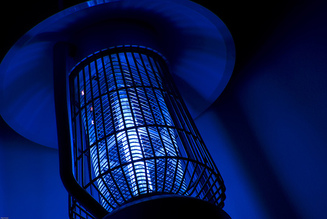 A bug zapper is a popular exterior appliance installed by a homeowner or food handler to attempt localized control of flying insect populations. Its name comes from the characteristic "zap" sound produced when an insect is electrocuted. Around homes, they are primarily used to kill biting (female) mosquitoes, which create itchy bumps and can transmit the West Nile Virus or encephalitis, malaria and yellow fever. While Popular Mechanics produced a sketch of a bug zapper as early as 1911, it wasn't until 1934 that parasitology professor Dr. W.B. Herms introduced the electronic insect killer that became the model for all future bug zappers. How They Work Bug zappers typically consist of the following components:
Bug zappers can kill many thousands of flying insects nightly. Some models incorporate a tray designed to collect scattered insect parts, although many models allow the debris to fall to the ground below. Effective or Not? Despite their widespread use, numerous studies have called into question the effectiveness and safety of bug zappers. Two of the more pressing issues are the following:
Bug zappers do not present more of a fire hazard than other electrical devices. Most units have been UL-tested, but, as with any outdoor electrical appliance, care must be taken to ensure that electrical cords do not become frayed or wet. They should also be connected to GFCI-protected receptacles. Inspectors may pass on the following mosquito-control techniques to concerned homeowners:
Craftsman Home Inspections llc is a home inspection and Radon Testing company proudly serving the Aurora CO and Denver CO Metro Areas. If you are looking for a Home Inspector in Aurora or Denver, please give us a call at 720-593-0383 or check us out online at CraftsmanColorado.com or simply schedule your home inspection below.
SCHEDULE INSPECTION by Nick Gromicko Brownfields, also known as brownfield lands and brownfield sites, are former industrial and commercial sites where redevelopment is complicated by chemical, physical and/or biological contamination, as well as potential suspicion as to whether such sites have been adequately remediated. The term "brownfield" first came into use in 1992 to describe these blighted areas that can be found in virtually every community across the United States. Brownfields are a significant concern because they affect property values, and endanger the safety of curious neighborhood children as well as future owners. Moreover, brownfields pose significant public health threats and incite heated debate within communities concerning the question of devoting public resources to their cleanup and reuse. Commercial and residential property inspectors may be asked to inspect a property that is built on a brownfield. While the U.S. Department of Labor states that brownfield sites “are generally not highly contaminated,” unlike designated Superfund sites, the agency warns that “the types and levels of contaminants present can vary considerably,” and pollutants may contaminate underground aquifers, drums, tanks, and subsurface and surface soils. Common pollutants include petroleum hydrocarbons, lead, construction debris, asbestos, polychlorinated biphenyls, wood that's been treated with creosote, cadmium chromium and arsenic, and industrial chemicals and diesel fuel, according to the U.S. Environmental Protection Agency. Mechanical dangers, such as uncovered holes, sharp objects and unsafe structures, also plague many brownfield sites. Pressure exists in many communities, especially congested, inner-city areas where undeveloped land is sparse, to remediate brownfields into usable commercial and residential real estate. Brownfield restoration for such uses is no simple feat, however, as builders typically must remove and replace the upper layer of soil, and then separate the new soil from the underlying earth with an impervious concrete cap. Engineered systems may be required to pump contaminated materials from the soil. Still, redevelopment can be successful and lucrative, as exemplified by one such undertaking in Pittsburgh, Pennsylvania, where many former steel mill sites have been converted into high-end residences, shopping centers and offices. In one successful endeavor, a former Pittsburgh slag dump was turned into Summerset at Frick Park, a $243 million residential development. Inspectors should be aware that even after a successful brownfield restoration, residential use of these properties is often restricted, and many otherwise harmless activities may represent grave public health threats. Owners may not be permitted, for instance, to grow outdoor gardens for food. They also may not be allowed to drive fence posts into the ground, as such activities can pierce the concrete cap and allow subsoil contaminants to flow to the surface. Inspectors may want to be on the lookout for chemical and mechanical hazards, such as previously unknown underground storage tanks, buried drums, and buried railroad tank cars that were not discovered or remedied during the initial restoration. Clients who want specific information about their property’s history may obtain the site characterization and hazard assessment documents from previous owners and county records. Inspectors may also recommend soil testing by a qualified soil engineer. While inspecting such potentially or formerly toxic properties, inspectors should be sure to wear personal protective equipment, such as coveralls, boots, a respirator, and thick gloves. In summary, brownfields are former industrial and commercial sites that may be cleaned up and reclaimed for use as commercial properties and residences, under certain approved conditions. Inspectors should be made aware of such a commercial or residential property's history to decide whether additional research and expert assistance are required in order to perform a competent and thorough inspection. Craftsman Home Inspections llc is a home inspection and Radon Testing company proudly serving the Aurora CO and Denver CO Metro Areas. If you are looking for a Home Inspector in Aurora or Denver, please give us a call at 720-593-0383 or check us out online at CraftsmanColorado.com or simply schedule your home inspection below.
SCHEDULE INSPECTION by Nick Gromicko  Brominated flame or fire retardants (BFRs) include a wide range of chemicals added to household furnishings and products to inhibit their ignition and reduce the chance of fire. In recent years, concern surrounding the toxicity of this class of chemicals has risen due to the widespread accumulation of several types of BFRs in humans and in the natural environment. There are more than 175 different types of flame retardants, which are generally divided into classes that include brominated, chlorinated, phosphorus-containing, nitrogen-containing, and inorganic flame retardants. Producing BFRs, at a rate of 5 million metric tons annually, is a $2 billion business, and this particular arm of consumer fire safety is currently the industry leader. For several decades, BFRs have been routinely added to consumer products, including computers, TVs, electrical cables, carpets, furniture and textiles, in a largely successful effort to reduce fire-related injuries and property damage. BFRs are found virtually everywhere in the environment, from house dust and indoor and outdoor air, to sediments in rivers, estuaries and oceans. BFR contamination has been discovered in polar bears, eagles, and even in the blubber of sperm whales in the deep, remote waters of the Atlantic Ocean. High levels of the chemicals have been found in the atmosphere and rivers near urban and industrialized areas. Perhaps the greatest concern, though, is the concentration of the chemicals found in the blood of office workers and in human breast milk, where it can be transferred from mother to child. One type of BFR is TBBP-A, which has been linked to breast cancer, and has been shown in mice and rats to disrupt the thyroid hormone system, which plays a crucial role in the development of the brain and body. Laboratory research has demonstrated that low-level exposure of young mice to PBDE – another BFR -- causes permanent disturbances in behavior, memory and learning. Linda Birnbaum, a toxicologist with the EPA, told CBS News that PBDEs "can affect the developing brain, and they can affect the developing reproductive system.” The World Health Organization has called for disuse of PBDEs where adequate alternatives are available, and the Swedish Chemicals Inspectorate has called for the chemicals to be entirely phased out. By contrast, the UK Department for Trade and Industry calls fears over PBDEs “chemical paranoia,” arguing that there is no conclusive proof that BFRs are harmful to humans. Still, the European Union has banned PBDEs in electronic devices, and in the United States, PBDEs are now heavily regulated, notably in Washington state, Maine and California. Alternatives to BFRs that provide comparable fire safety are available, and many products have been redesigned so that flame-retardant chemicals are unnecessary. Apple and Sony have changed the casing material for the MacBook Air and Vaio, respectively, in order to reduce the need for flame-retardant additives. However, BFRs are still used in a wide array of products, and testing for the presence of the chemicals is difficult for the layperson. In summary, BFRs, although highly regulated, continue to pervade homes and the natural environment, exposing humans and animals to potential danger. Craftsman Home Inspections llc is a home inspection and Radon Testing company proudly serving the Aurora CO and Denver CO Metro Areas. If you are looking for a Home Inspector in Aurora or Denver, please give us a call at 720-593-0383 or check us out online at CraftsmanColorado.com or simply schedule your home inspection below.
SCHEDULE INSPECTION by Nick Gromicko and Ethan Ward 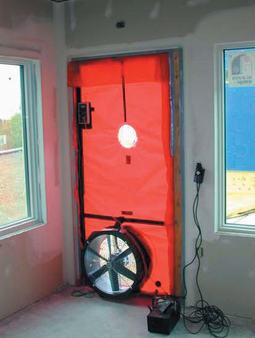 What is a Blower Door? Inspectors should become familiar with blower doors, as they can be a valuable tool in energy audits. A blower door is a powerful, variable-speed fan that can be temporarily mounted into an exterior door frame to provide controlled air flow for analysis. The way that air flows through a building can have a serious impact on air quality, comfort and energy expenses. The use of a blower door allows air flow through a structure, and the resulting loss of heat can be immediately quantified, providing a way to pinpoint the location of air leaks. Blower doors were originally developed in the 1970s for use as a research tool. As technology has evolved, allowing for the development of more portable equipment, blower doors have transitioned into use as a valuable field tool, as well. The first portable blower doors weighed as much as 200 pounds and took up quite a bit of space, and were also very expensive. Today, they are much more affordable and are built lighter and smaller. The reduced set-up time allowed by their more compact designs has led to the standard use of blower doors as part of energy audits for measuring air flow. How It Works When air pressure and air flow are controlled and measured, they can provide data about how airtight a building is. The three variables involved are pressure, flow and holes or leaks. A change in one of these factors will produce a change in at least one other factor. Since the goal of a blower door test is to locate air leaks in the building envelope, data regarding air pressure and flow can provide information about the holes, which may otherwise be tough to find. The blower door utilizes controlled differences in air pressure to collect data. Once installed in an exterior door frame, the air pressure inside a building can be changed in relation to the outside pressure by forcing air into or out of the interior. The difference in pressure forces air through holes or leaks in the building envelope. The pressure and air flow are measured by gauges, which are part of the blower door equipment. By measuring the pressure and air flow in relation to each other, the airtightness of the building envelope can be quantified. The amount of air flow needed to create a change in pressure increases as the airtightness of the building envelope decreases. A well-sealed building requires less air flow to generate a change in pressure. Finding the Problems During a blower door test, the interior air pressure needed to be maintained in order to gather useful data is 50 pascals, which is roughly equal to the pressure created when a 20-mph wind hits the building. The blower door equipment has a gauge to indicate when this pressure has been achieved, as well as a gauge to indicate the cubic feet per minute (CFM), which is the standard unit of measure for air flow. Air flow in a well-sealed building will generally be less than 1,500 CFM at 50 pascals. Air flow above 4,000 CFM would be considered leaky. This is valuable data that can be acquired in about half an hour with the use of a blower door. Since the blower door forces air through cracks and holes, the locations of the leaky spots can be identified. The draft of air entering through the holes can often be felt with the hand. Smoke and infrared imaging can also be employed to locate smaller, more subtle leaks. It is often assumed, especially by homeowners, that poorly sealed windows and doors are the major culprits of air leaks. In reality, leaks in other areas are usually much more significant. The difference in air pressure between the interior and the exterior is greater both at ground level and up high, so leaks in basements and crawlspaces, as well as in attics, are the most important to locate. When looking for air leaks, check through basement rim joists, holes for plumbing traps under tubs and showers, cracks between finish flooring and baseboards, utility chases, plumbing vent-pipe penetrations, kitchen soffits, fireplace surrounds, recessed can lights, and cracks between partition top plates and drywall. These are all common places where significant leaks can develop. Accounting for Outside Factors Wind and temperature can have an effect on the test data. Wind blowing on the outside of the building can add to pressure differences between the interior and exterior. It can also affect the flow rate of the blower fan. It is best not to conduct blower door tests in windy conditions. But if wind is not severe, tests can be conducted at multiple points in the building and then averaged together. Differences in temperature can create differences in pressure. Accounting for a baseline stack-effect pressure will ensure that the test results are not skewed. The stack-effect pressure is a function of the height of the building and the difference in temperature from the interior to the exterior. A 15-foot tall building with a 50º-temperature difference between the inside and outside will have a 5-pascal pressure difference from the top of the building to the bottom. Some blower door equipment has a gauge with a built-in baseline feature, so this difference can be easily determined at the outset of the test. Temperature and barometric pressure affect both air density and viscosity, which is its resistance to flow. Because of this, an adjustment for density is required. Some software packaged with blower door equipment is designed to make these calculations, and if it is not available during the test, the manual supplied with the equipment should have information about making the necessary adjustments and applying it to the results. Preparation and Safety In order to ensure accurate results, as well as safe conditions for performing the test, some preparation is necessary before beginning. Any fireplaces or stoves used for heating should not be operating, and all furnaces and pilot lights should be turned off. There should be no open flames anywhere indoors. Ashes in fireplaces or stoves should be removed so they do not get sucked into the building. Dampers should be closed. Every door and window must be closed tightly so that air flowing through them does not affect the test, while all interior doors should be left open. If there is a basement, it must be determined whether this area is to be considered part of the building envelope for testing purposes. Generally, if there is heat in the basement, even if only because the furnace is located there, it will be considered part of the envelope, and access to it should be left open during the test. Sometimes, the test may be done both ways -- with the basement access open and with it closed, and this is quick and simple to accomplish. Since blower door testing is a standard tool used during an energy audit, it is helpful for inspectors to understand how the test works. Knowing a bit about the outside factors that can influence the results will ensure that the test is performed correctly. Setting up the equipment properly will ensure that testers and occupants are safe, and that the testing and results are accurate. Craftsman Home Inspections llc is a home inspection and Radon Testing company proudly serving the Aurora CO and Denver CO Metro Areas. If you are looking for a Home Inspector in Aurora or Denver, please give us a call at 720-593-0383 or check us out online at CraftsmanColorado.com or simply schedule your home inspection below.
SCHEDULE INSPECTION by Nick Gromicko A Bloom Box® is a refrigerator-sized domestic power plant that produces electricity cleanly and cheaply, and may one day replace the traditional power grid. Its inventor wants to put one in every home by the year 2020. The Bloom Box® is the creation of Bloom Energy, a Sunnyvale, California-based company that promises to revolutionize energy with its “power plant in a box.” While essentially a fuel cell – green energy devices that have been around for decades and have yet to compete with even marginal renewable energy sources – Bloom Energy claims to have designed a product that could transform how buildings are powered. A recent 60 Minutes interview with Bloom Energy’s CEO, combined with a handful of high-profile customers, have generated buzz among environmentalists, engineers and builders. How Do They Work? The technology for the Bloom Box® comes from an oxygen generator originally designed for NASA's Mars program. When that program was scrapped, the design was converted, with the help of $400 million in funding, into a new type of fuel cell. In Bloom's design, fuel and oxygen are fed to cells (relatively inexpensive, painted ceramic disks) where they combine chemically to create electricity. The cells are separated by a cheap metal alloy, deviating from earlier designs that required precious metals, such as platinum. The cells are stacked into a cube of flexible capabilities; a stack of 64 can power a small business, but an assortment of sizes is fully customizable. Bloom Boxes® in Service Bloom Boxes® are still experimental, but 20 Fortune 100 companies in California have purchased the devices at $700,000 to $800,000 each. FedEx, Wal-Mart, eBay and Google have all taken advantage of state and federal subsides by purchasing Bloom Boxes® for use at their headquarters. The primary motive for these companies to embrace green power may be based in public relations, but eBay has boasted that its five boxes have saved the company $100,000 in energy costs. Benefits of Bloom Boxes®
Craftsman Home Inspections llc is a home inspection and Radon Testing company proudly serving the Aurora CO and Denver CO Metro Areas. If you are looking for a Home Inspector in Aurora or Denver, please give us a call at 720-593-0383 or check us out online at CraftsmanColorado.com or simply schedule your home inspection below.
SCHEDULE INSPECTION by Nick Gromicko 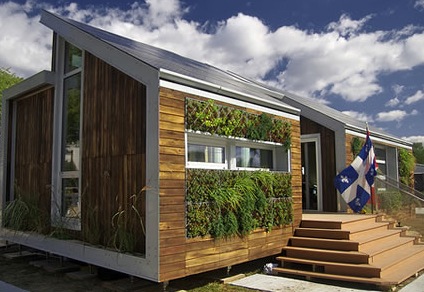 Biowalls -- also referred to as living walls, vertical gardens, green facades, and green walls -- are interior or exterior walls that are covered with living vegetation. Biowalls have practical applications for both indoor and outdoor use. Many indoor biowalls are implemented in homes and offices for their natural air-filtration properties, and are used in tandem with traditional HVAC systems. Outdoor biowalls are most commonly found in urban environments, and serve to insulate buildings and combat the urban heat island (or UHI) effect, where exposed concrete surfaces reflect heat and cause urban centers to be excessively hot in the summertime. Biowalls are also effective for mitigating the UHI effect in urban centers located in warm and dry climates. Facts and Figures
There are two main types biowalls:
There are two main classifications that distinguish biofiltration intensity:
Craftsman Home Inspections llc is a home inspection and Radon Testing company proudly serving the Aurora CO and Denver CO Metro Areas. If you are looking for a Home Inspector in Aurora or Denver, please give us a call at 720-593-0383 or check us out online at CraftsmanColorado.com or simply schedule your home inspection below.
SCHEDULE INSPECTION  Outdoor air pollution in cities is a major health problem. Much effort and money continue to be spent cleaning up pollution in the outdoor air. But air pollution can be a problem where you least expect it, in the place you may have thought was safest -- your home. Many ordinary activities, such as cooking, heating, cooling, cleaning and redecorating, can cause the release and spread of indoor pollutants at home. Studies have shown that the air in our homes can be even more polluted than outdoor air. Many Americans spend up to 90% of their time indoors, often at home. Therefore, breathing clean indoor air can have an important impact on health. People who are inside a great deal may be at greater risk of developing health problems, or having problems made worse by indoor air pollutants. These people include infants, young children, the elderly and those with chronic illnesses. Many factors determine whether pollutants in your home will affect your health. They include the presence, use and condition of pollutant sources, the level of pollutants both indoors and out, the amount of ventilation in your home, and your overall health. What are Biological Pollutants? Biological pollutants are or were living organisms. They promote poor indoor air quality and may be a major cause of days lost from work and school, and of doctor and hospital visits. Some can even damage surfaces inside and outside your house. Biological pollutants can travel through the air and are often invisible. Some common indoor biological pollutants are:
Some of these substances are in every home. It is impossible to get rid of them all. Even a spotless home may permit the growth of biological pollutants. Two conditions are essential to support biological growth: nutrients and moisture. These conditions can be found in many locations, such as bathrooms, damp or flooded basements, wet appliances (such as humidifiers and air conditioners), and even some carpets and furniture. Modern materials and construction techniques may reduce the amount of outside air brought into buildings, which may result in high moisture levels inside. Using humidifiers, unvented heaters, and air conditioners in our homes has increased the chances of moisture forming on interior surfaces. This encourages the growth of certain biological pollutants. The Scope of the Problem Most information about sources and health effects of biological pollutants is based on studies of large office buildings and surveys of homes in the northern U.S. and Canada. These surveys show that 30% to 50% of all structures have damp conditions which may encourage the growth and buildup of biological pollutants. This percentage is likely to be higher in warm, moist climates. Some diseases and illnesses have been linked with biological pollutants in the indoor environment. However, many of them also have causes unrelated to the indoor environment. Therefore, we do not know how many health problems relate only to poor indoor air. Health Effects of Biological Pollutants All of us are exposed to biological pollutants. However, the effects on our health depend on the type and amount of biological pollution and the individual person. Some people do not experience health reactions from certain biological pollutants, while others may experience one or more of the following reactions:
Except for the spread of infections indoors, allergic reactions may be the most common health problem with indoor air quality in homes. They are often connected with animal dander (mostly from cats and dogs), with house dust mites (microscopic animals living in household dust), and with pollen. Allergic reactions can range from mildly uncomfortable to life-threatening, as in a severe asthma attack. Some common signs and symptoms are:
Health experts are especially concerned about people with asthma. These people have very sensitive airways that can react to various irritants, making breathing difficult. The number of people who have asthma has greatly increased in recent years. The number of people with asthma has gone up by 59% since 1970, to a total of 9.6 million people. Asthma in children under 15 years of age has increased 41% in the same period, to a total of 2.6 million children. The number of deaths from asthma is up by 68% since 1979, to a total of almost 4,400 deaths per year. Talking to Your Doctor Are you concerned about the effects on your health that may be related to biological pollutants in your home? Before you discuss your concerns with your doctor, you should know the answers to the following questions. This information can help the doctor determine whether your health problems may be related to biological pollution.
Toxic reactions are the least studied or understood health problem caused by some biological air pollutants in the home. Toxins can damage a variety of organs and tissues in the body, including the liver, the central nervous system, the digestive tract, and the immune system. Checking Your Home There is no simple or cheap way to sample the air in your home to determine the level of all biological pollutants. Experts suggest that sampling for biological pollutants is not a useful problem-solving tool. Even if you had your home tested, it is almost impossible to know which biological pollutant(s) cause various symptoms or health problems. The amount of most biological substances required to cause disease is unknown and varies from one person to the next. Does this make the problem sound hopeless? On the contrary, you can take several simple, practical actions to help remove sources of biological pollutants, to help get rid of pollutants, and to prevent their return. Self-Inspection: A Walk Through Your Home Begin by touring your household. Follow your nose, and use your eyes. Two major factors help create conditions for biological pollutants to grow: nutrients and constant moisture with poor air circulation.
A musty odor, moisture on hard surfaces, and even water stains, may be caused by:
Before you give away the family pet or move, there are less drastic steps you can take to reduce potential problems. Properly cleaning and maintaining your home can help reduce the problem and may avoid interrupting your normal routine. People who have health problems, such as asthma, or who are allergic, may need to do this and more. Discuss this with your doctor. Moisture Control Water in your home can come from many sources. Water can enter your home by leaking or by seeping through basement floors. Showers and even cooking can add moisture to the air in your home. The amount of moisture that the air in your home can hold depends on the temperature of the air. As the temperature goes down, the air is able to hold less moisture. This is why, in cold weather, moisture condenses on cold surfaces (for example, drops of water form on the inside of a window). This moisture can encourage biological pollutants to grow. There are many ways to control moisture in your home:
Clean Surfaces
Dust Control Controlling dust is very important for people who are allergic to animal dander and mites. You cannot see mites, but you can either remove their favorite breeding grounds or keep these areas dry and clean. Dust mites can thrive in sofas, stuffed chairs, carpets and bedding. Open shelves, fabric wallpaper, knickknacks, and venetian blinds are also sources of dust mites. Dust mites live deep in the carpet and are not removed by vacuuming. Many doctors suggest that their mite-allergic patients use washable area rugs rather than wall-to-wall carpet.
Before You Move Protect yourself by hiring an InterNACHI inspector to inspect your potential new home. If you identify problems, have the landlord or seller correct them before you move in, or even consider moving elsewhere.
What if damage is already done? Follow these guidelines for correcting water damage:
Reducing Exposure to Biological Contaminants General good housekeeping, and maintenance of heating and air-conditioning equipment, are very important. Adequate ventilation and good air distribution also help. The key to mold control is moisture control. If mold is a problem, clean up the mold and get rid of excess water and moisture. Maintaining the relative humidity between 30% to 60% will help control mold, dust mites and cockroaches. Employ integrated pest management to control insect and animal allergens. Cooling-tower treatment procedures exist to reduce levels of Legionella and other organisms. Install and use exhaust fans that are vented to the outdoors in kitchens and bathrooms, and vent clothes dryers outdoors. These actions can eliminate much of the moisture that builds up from everyday activities. There are exhaust fans on the market that produce little noise, an important consideration for some people. Another benefit to using kitchen and bathroom exhaust fans is that they can reduce levels of organic pollutants that vaporize from hot water used in showers and dishwashers. Ventilate the attic and crawlspaces to prevent moisture build-up. Keeping humidity levels in these areas below 50% can prevent water condensation on building materials. If using cool mist or ultrasonic humidifiers, clean appliances according to the manufacturer's instructions and refill with fresh water daily. Because these humidifiers can become breeding grounds for biological contaminants, they have the potential for causing diseases such as hypersensitivity pneumonitis and humidifier fever. Evaporation trays in air conditioners, dehumidifiers, and refrigerators should also be cleaned frequently. Thoroughly clean and dry water-damaged carpets and building materials (within 24 hours, if possible), or consider removal and replacement. Water-damaged carpets and building materials can harbor mold and bacteria. It is very difficult to completely rid such materials of biological contaminants. Keep the house clean. House dust mites, pollens, animal dander, and other allergy-causing agents can be reduced, although not eliminated, through regular cleaning. People who are allergic to these pollutants should use allergen-proof mattress encasements, wash bedding in hot water (130° F), and avoid room furnishings that accumulate dust, especially if they cannot be washed in hot water. Allergic individuals should also leave the house while it is being vacuumed because vacuuming can actually increase airborne levels of mite allergens and other biological contaminants. Using central vacuum systems that are vented to the outdoors, or vacuums with high efficiency filters may also be of help. Take steps to minimize biological pollutants in basements. Clean and disinfect the basement floor drain regularly. Do not finish a basement below ground level unless all water leaks are patched and outdoor ventilation and adequate heat to prevent condensation are provided. Operate a dehumidifier in the basement, if needed, to keep relative humidity levels between 30% to 50%. Health Effects From Biological Contaminants Some biological contaminants trigger allergic reactions, including hypersensitivity pneumonitis, allergic rhinitis, and some types of asthma. Infectious illnesses, such as influenza, measles and chicken pox, are transmitted through the air. Molds and mildews release disease-causing toxins. Symptoms of health problems caused by biological pollutants include sneezing, watery eyes, coughing, shortness of breath, dizziness, lethargy, fever and digestive problems. Allergic reactions occur only after repeated exposure to a specific biological allergen. However, that reaction may occur immediately upon re-exposure, or after multiple exposures over time. As a result, people who have noticed only mild allergic reactions, or no reactions at all, may suddenly find themselves very sensitive to particular allergens. Some diseases, such as humidifier fever, are associated with exposure to toxins from microorganisms that can grow in large buildings' ventilation systems. However, these diseases can also be traced to micro-organisms that grow in home heating and cooling systems and humidifiers. Children, elderly people, and people with breathing problems, allergies, and lung diseases are particularly susceptible to disease-causing biological agents in the indoor air. Mold, dust mites, pet dander, and pest droppings or body parts can trigger asthma. Biological contaminants, including molds and pollens, can cause allergic reactions for a significant portion of the population. Tuberculosis, measles, staphylococcus infections, Legionella and influenza are known to be transmitted by air. Combustion Pollutants Combustion appliances are those which burn fuels for warmth, cooking or decorative purposes. Typical fuels are gas, both natural and liquefied petroleum (LP), kerosene, oil, coal and wood. Examples of the appliances are space heaters, ranges, ovens, stoves, furnaces, fireplaces, water heaters, and clothes dryers. These appliances are usually safe. However, under certain conditions, these appliances can produce combustion pollutants that can damage your health, or even kill you. What are Combustion Pollutants? Combustion pollutants are gases and particles that come from burning materials. The combustion pollutants come from burning fuels in appliances. The types and amounts of pollutants produced depend on the type of appliance, how well the appliance is installed, maintained and vented, and the kind of fuel it uses. Some of the common pollutants produced from burning these fuels are carbon monoxide, nitrogen dioxide, particles, and sulfur dioxide. Particles can have hazardous chemicals attached to them. Other pollutants that can be produced by some appliances are unburned hydrocarbons and aldehydes. Combustion always produces water vapor. Water vapor is not usually considered a pollutant, but it can act as one. It can result in high humidity and wet surfaces. Where do Combustion Pollutants Come From? Combustion pollutants found indoors include outdoor air, tobacco smoke, exhaust from car and lawn mower internal combustion engines, and some hobby activities, such as welding, woodburning and soldering. Combustion pollutants can also come from vented or unvented combustion appliances. These appliances include space heaters, gas ranges and ovens, furnaces, gas water heaters, gas clothes dryers, wood and coal-burning stoves, and fireplaces. As a group, these are called "combustion appliances." Appliances Vented appliances are appliances designed to be used with a duct, chimney, pipe, or other device that carries the combustion pollutants outside the home. These appliances can release large amounts of pollutants directly into your home if a vent is not properly installed, or is blocked or leaking. Unvented appliances do not vent to the outside, so they release combustion pollutants directly into the home. Many of these problems are hard for a homeowner to identify. A professional is needed. What are the Health Effects of Combustion Pollutants? The health effects of combustion pollutants range from headaches and breathing difficulties to death. The health effects may show up immediately after exposure, or occur after being exposed to the pollutants for a long time. The effects depend on the type and amount of pollutants, and the length of time of exposure to them. They also depend upon several factors related to the exposed person. These include the age and any existing health problems. There are still some questions about the level of pollutants or the period of exposure needed to produce specific health effects. Further studies to better define the release of pollutants from combustion appliances and their health effects are needed. The sections below discuss health problems associated with some common combustion pollutants. These pollutants include carbon monoxide, nitrogen dioxide, particles, and sulfur dioxide. Even if you are healthy, high levels of carbon monoxide can kill you within a short time. The health effects of the other pollutants are generally more subtle and are more likely to affect susceptible people. It is always a good idea to reduce exposure to combustion pollutants by using and maintaining combustion appliances properly. Carbon Monoxide: Each year, according to CPSC, there are more than 200 carbon monoxide deaths related to the use of all types of combustion appliances in the home. Exposure to carbon monoxide reduces the blood's ability to carry oxygen. Often, a person or an entire family may not recognize that carbon monoxide is poisoning them. The chemical is odorless, and some of the symptoms are similar to common illnesses. This is particularly dangerous because carbon monoxide's deadly effects will not be recognized until it is too late to take action against them. Carbon monoxide exposures especially affect unborn babies, infants, and people with anemia or a history of heart disease. Breathing low levels of the chemical can cause fatigue and increase chest pain in people with chronic heart disease. Breathing higher levels of carbon monoxide causes symptoms such as headaches, dizziness, and weakness in healthy people. Carbon monoxide also causes sleepiness, nausea, vomiting, confusion and disorientation. At very high levels, it causes loss of consciousness and death. Nitrogen Dioxide: Breathing high levels of nitrogen dioxide causes irritation of the respiratory tract and causes shortness of breath. Compared to healthy people, children, and individuals with respiratory illnesses such as asthma, may be more susceptible to the effects of nitrogen dioxide. Some studies have shown that children may have more colds and flu when exposed to low levels of nitrogen dioxide. When people with asthma inhale low levels of nitrogen dioxide while exercising, their lung airways can narrow and react more to inhaled materials. Particles: Particles suspended in the air can cause eye, nose, throat and lung irritation. They can increase respiratory symptoms, especially in people with chronic lung disease or heart problems. Certain chemicals attached to particles may cause lung cancer, if they are inhaled. The risk of lung cancer increases with the amount and length of exposure. The health effects from inhaling particles depend upon many factors, including the size of the particle and its chemical make-up. Sulfur Dioxide: Sulfur dioxide at low levels of exposure can cause eye, nose, and respiratory tract irritation. At high exposure levels, it causes the lung airways to narrow. This causes wheezing, chest tightness, and breathing problems. People with asthma are particularly susceptible to the effects of sulfur dioxide. They may have symptoms at levels that are much lower than the rest of the population. Other Pollutants: Combustion may release other pollutants. They include unburned hydrocarbons and aldehydes. Little is known about the levels of these pollutants in indoor air and the resulting health effects. What do I do if I suspect that combustion pollutants are affecting my health? If you suspect you are being subjected to carbon monoxide poisoning, get fresh air immediately. Open windows and doors for more ventilation, turn off any combustion appliances, and leave the house. You could lose consciousness and die from carbon monoxide poisoning if you do nothing. It is also important to contact a doctor immediately for a proper diagnosis. Remember to tell your doctor that you suspect carbon monoxide poisoning is causing your problems. Prompt medical attention is important. Some symptoms from combustion pollutants -- including headaches, dizziness, sleepiness, coughing, and watery eyes -- may also occur because of common medical problems. These medical problems include colds, the flu, and allergies. Similar symptoms may also occur because of other indoor air pollutants. Contact your doctor for a proper diagnosis. How can I reduce my exposure to combustion pollutants? Proper selection, installation, inspection and maintenance of your appliances are extremely important in reducing your exposure to these pollutants. Providing good ventilation in your home and correctly using your appliance can also reduce your exposure to these pollutants. Additionally, there are several different residential carbon monoxide detectors for sale. These detectors alert consumers to harmful carbon monoxide levels in the home. They may soon be widely available to reduce deaths from carbon monoxide poisoning. Appliance Selection
Ventilation To reduce indoor air pollution, a good supply of fresh, outdoor air is needed. The movement of air into and out of your home is very important. Normally, air comes in through cracks around doors and windows. This air helps reduce the level of pollutants indoors. This supply of fresh air is also important to help carry pollutants up the chimney, stovepipe or flue to the outside.
Correct Use of Appliances
Inspection and Maintenance Have your combustion appliance regularly inspected and maintained to reduce your exposure to pollutants. Appliances that are not working properly can release harmful and even fatal amounts of pollutants, especially carbon monoxide. Have chimneys and vents inspected when installing or changing vented heating appliances. Some modifications may be required. For example, if a change was made in your heating system from oil to natural gas, the flue gas produced by the gas system could be hot enough to melt accumulated oil-combustion debris in the chimney or vent. This debris could block the vent, forcing pollutants into the house. It is important to clean your chimney and vents, especially when changing heating systems. Always hire an InterNACHI inspector to perform your home inspections, as they all must pass the most comprehensive, rigorous training program available. What are the Inspection and Maintenance Procedures? The best advice is to follow the recommendations of the manufacturer. The same combustion appliance may have different inspection and maintenance requirements, depending on where you live. In general, check the flame in the furnace combustion chamber at the beginning of the heating season. Natural gas furnaces should have a blue flame with perhaps only a slight yellow tip. Call your appliance service representative to adjust the burner if there is a lot of yellow in the flame, or call your local utility company for this service. LP units should have a flame with a bright blue center that may have a light yellow tip. Pilot lights on gas water heaters and gas cooking appliances should also have a blue flame. Have a trained service representative adjust the pilot light if it is yellow or orange. Before each heating season, have flues and chimneys inspected before each heating season for leakage and for blockage by creosote or debris. Creosote buildup or leakage could cause black stains on the outside of the chimney or flue. These stains can mean that pollutants are leaking into the house. Craftsman Home Inspections llc is a home inspection and Radon Testing company proudly serving the Aurora CO and Denver CO Metro Areas. If you are looking for a Home Inspector in Aurora or Denver, please give us a call at 720-593-0383 or check us out online at CraftsmanColorado.com or simply schedule your home inspection below.
SCHEDULE INSPECTION |
AuthorCraftsman Home Inspections. We are your Aurora and Denver Colorado Home Inspectors. Here you will find useful information about the Home Inspection industry as well as home maintenance tips. Archives
April 2020
Categories |
Our
|
Craftsman Home Inspections llcAt Craftsman Home Inspections we are professionals who promise to give you our best Home inspection every time.
|
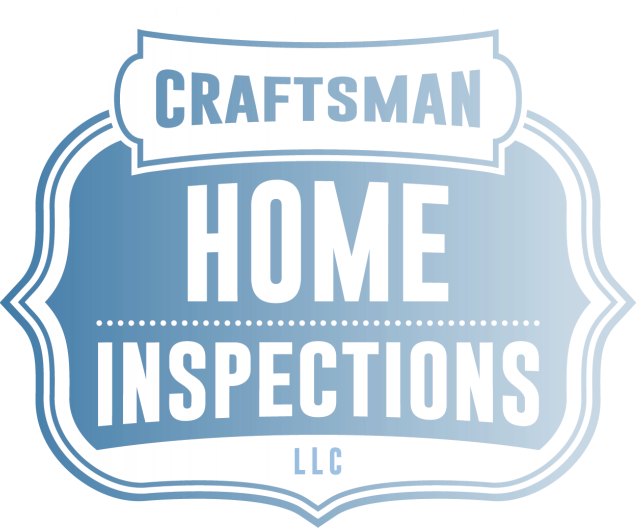



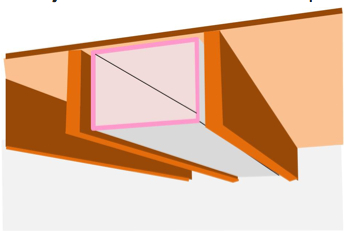
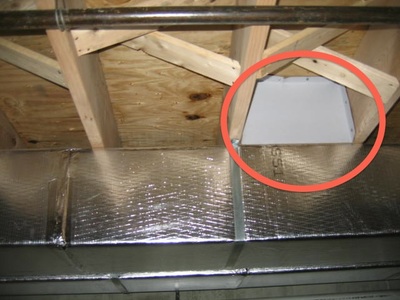
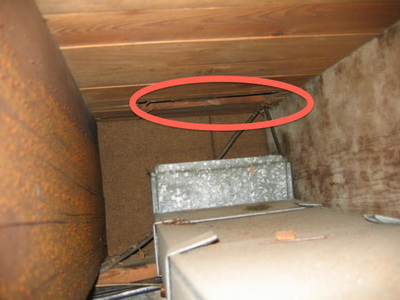
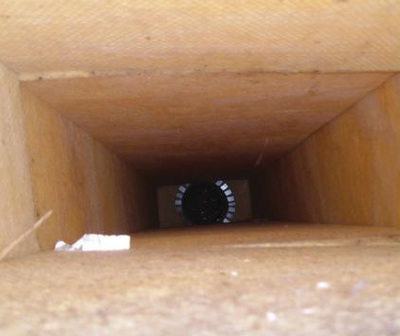
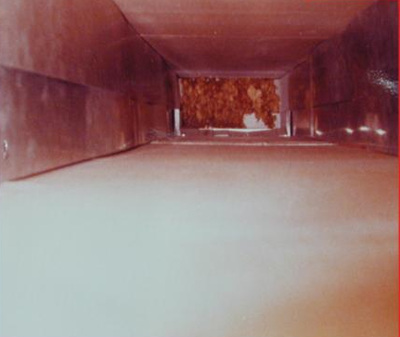
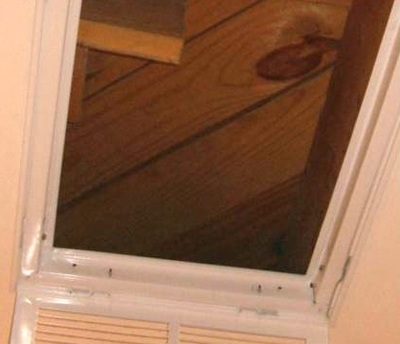
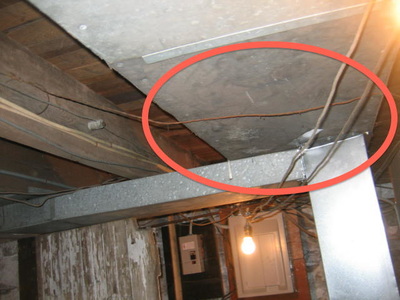
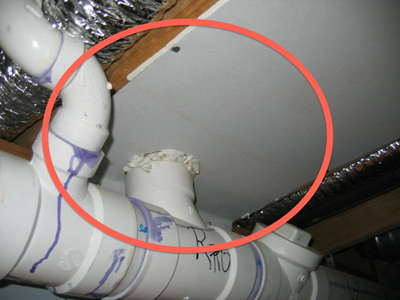
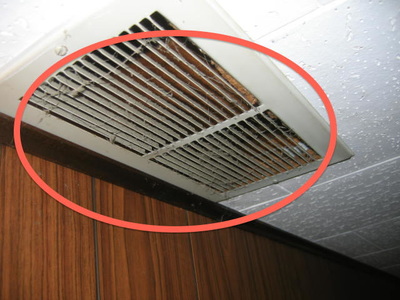
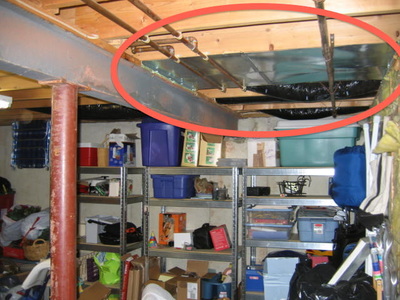
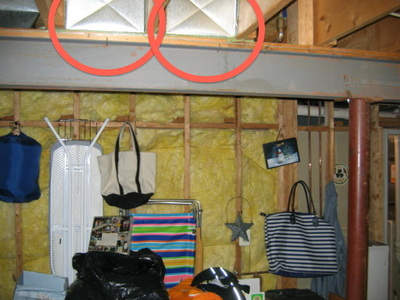
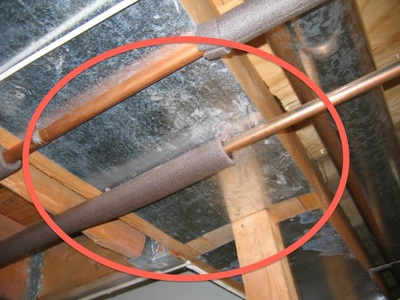
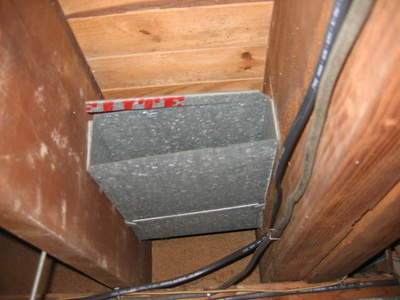
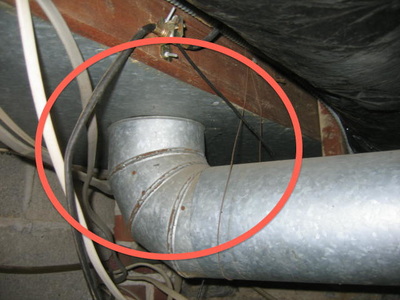
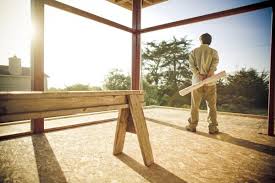

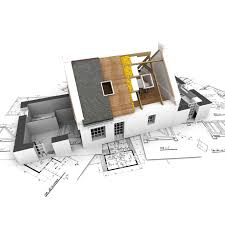
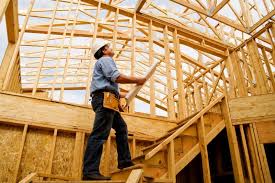

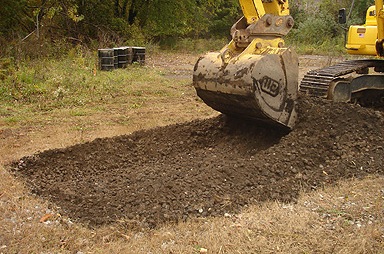
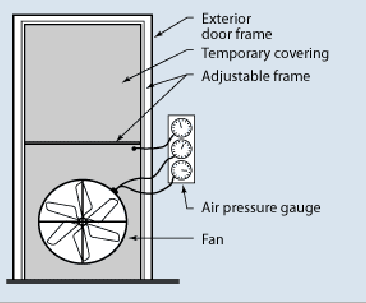
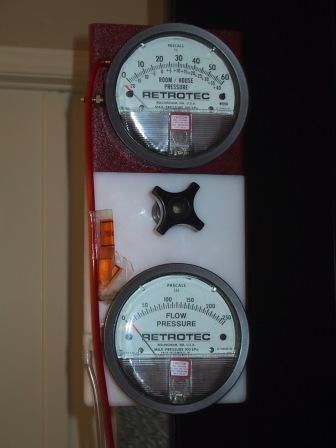
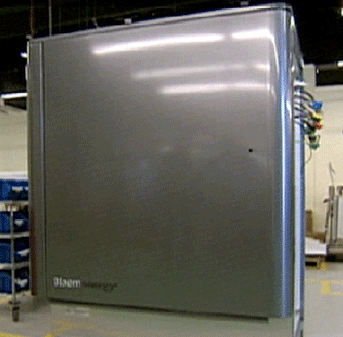


 RSS Feed
RSS Feed
